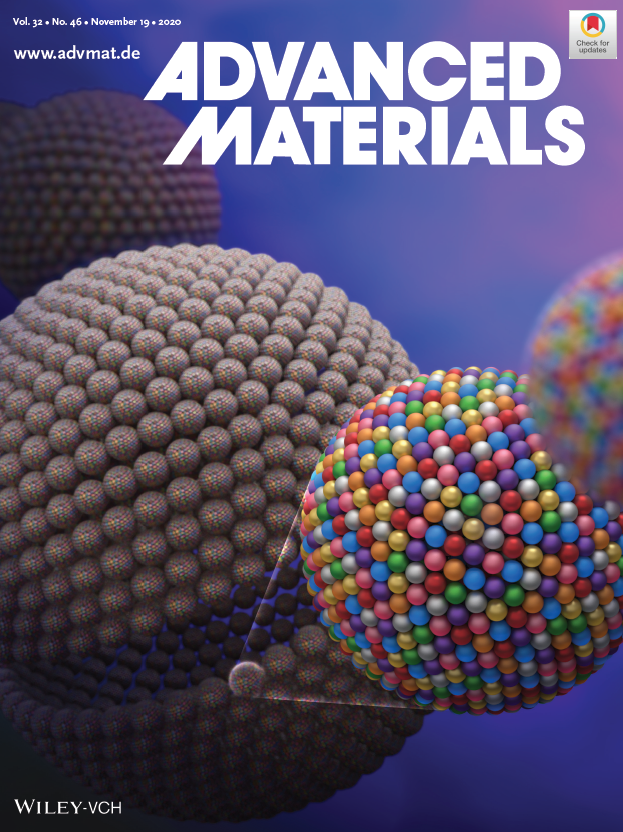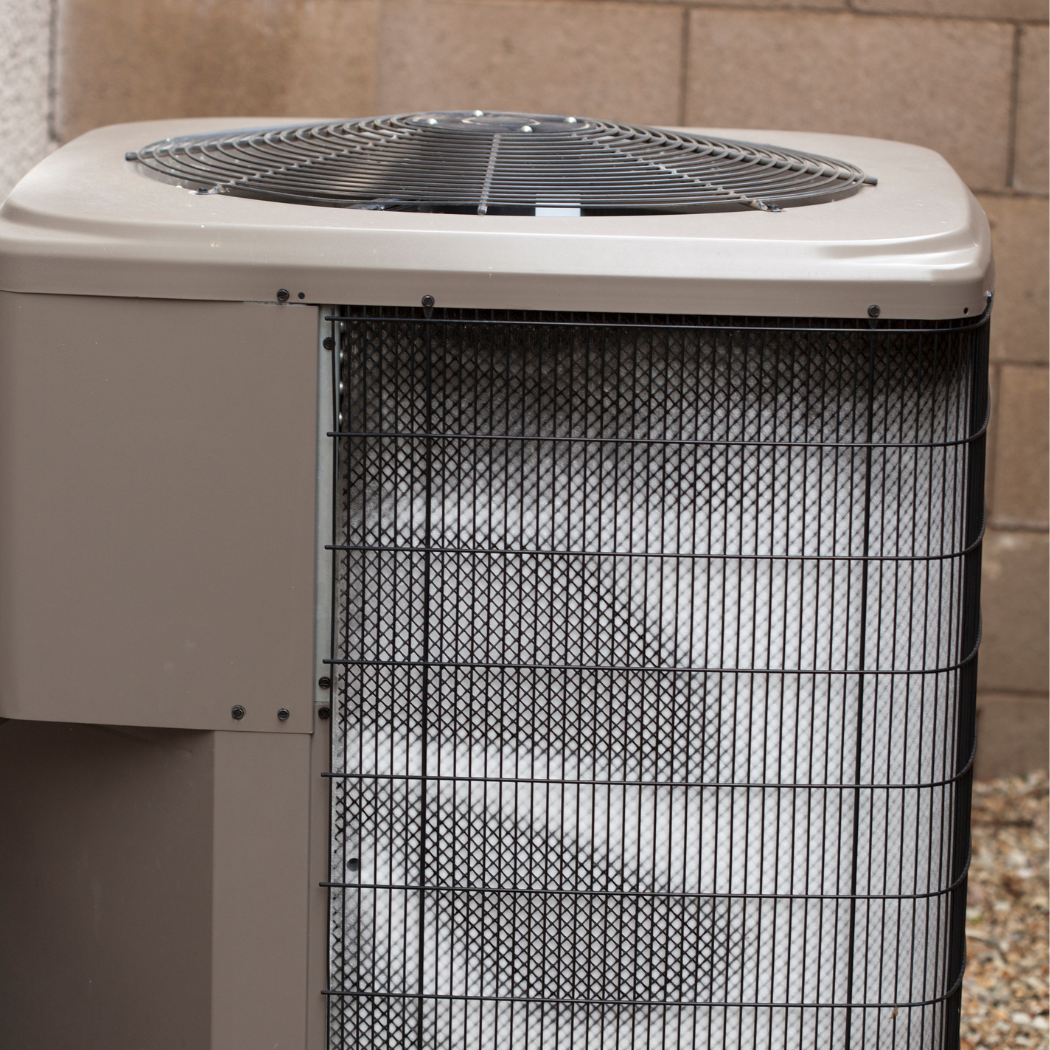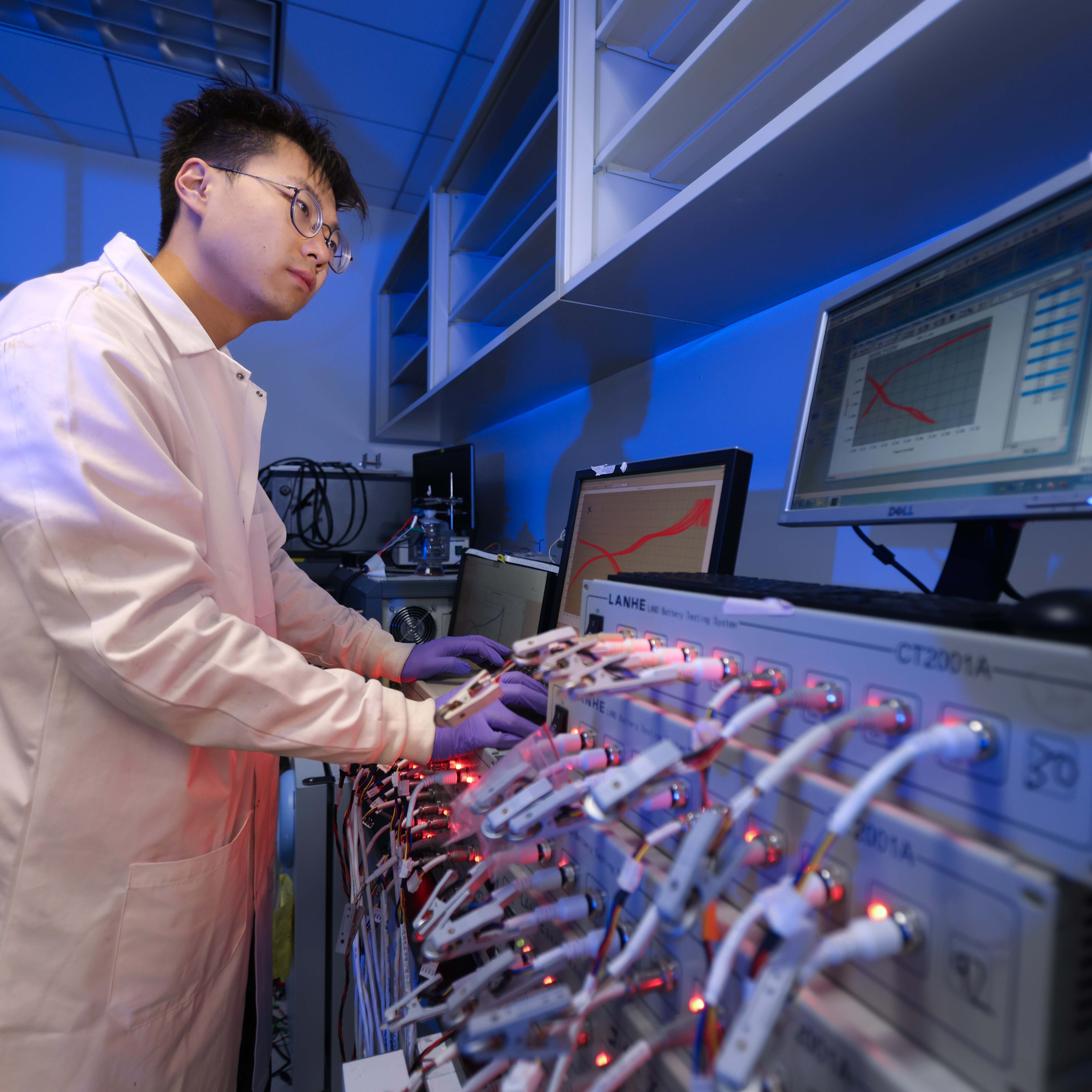News Story
Hollow, Multi-Metallic Nanoparticles Offer Novel Strategy for Synthesis of Highly Efficient Catalysis

For metal-based catalysts, combining multiple elements of precious and nonprecious metals in a hollow structure is a promising strategy to maintaining high efficiency, while reducing cost. A multi-institutional research team led by Liangbing Hu at the University of Maryland (UMD) have developed a continuous high temperature “droplet-to-particle” nanomanufacturing technique to produce a hollow, high-entropy alloy structure as catalysts for Li-O2 batteries – the study was recently featured on the cover of Advanced Materials.
Multi-metallic particles combining at least five dissimilar elements in a single structure, also called high entropy alloy (HEA) nanoparticles, have received significant attention due to their advantageous physicochemical properties. Most studies on metal-based hollow nanoparticles, however, report compositions not exceeding three elements due to the difficulty of mixing immiscible elements – this is mainly due to the complexity of controlling the morphologies of HEA nanoparticles under the conditions of a fast, high-temperature process with rapid cooling rate.
To synthesize hollow HEA nanoparticles, researchers from Hu’s group created a novel continuous “droplet-to-particle” method by adding a gas-blowing agent to the precursor. Typically, an aerosol stream of droplets as small as 1 µm in diameter containing metal chloride salts with citric acid dissolved in ethanol is readily heated to ~ 1300 K. During heating, citric acid rapidly decomposes to produce COx and H2O, which puffs the particle into a hollow structure. The metal salts are decomposed into metals, which are debased on the shell of the particle forming hollow HEA particles.
The team, including scientists from the University of Illinois, Chicago, and Boston College, synthesized multi-element metal alloys including quinary HEA RuIrFeCoNi and octonary HEA CrMnFeCoNiPdRuIr nanoparticles, but many other types of complex, hollow, multi-component materials could also be produced in this way.
Additionally, the authors conducted kinetic control experiments to understand how the concentration of citric acid affects the shell thickness, indicating how the mass loading of the hollow HEA particles can be tuned to achieve the desired performance in catalysis, or energy applications.
To demonstrate the utility of these materials, the team investigated the ability of hollow HEA nanoparticles composed of RuIrFeCoNi as a cathode catalyst for Li–O2 batteries and demonstrated a record-high current density per catalyst mass loading, as well as good stability and durable catalyst activity. This technique offers potential for producing hollow nanomaterials on a mass scale for broad use in catalysis and energy applications.
For additional information:
Wang, X., Dong, Q., Qiao, H., Huang, Z., Saray, M.T., Zhong, G., Lin, Z., Cui, M., Brozena, A., Hong, M., Xia, Q., Gao, J., Chen, G., Shahbazian‐Yassar, R., Wang, D. and Hu, L. (2020), Catalytic Materials: Continuous Synthesis of Hollow High‐Entropy Nanoparticles for Energy and Catalysis Applications (Adv. Mater. 46/2020). Adv. Mater., 32: 2070341. https://doi.org/10.1002/adma.202070341
Published January 10, 2021









